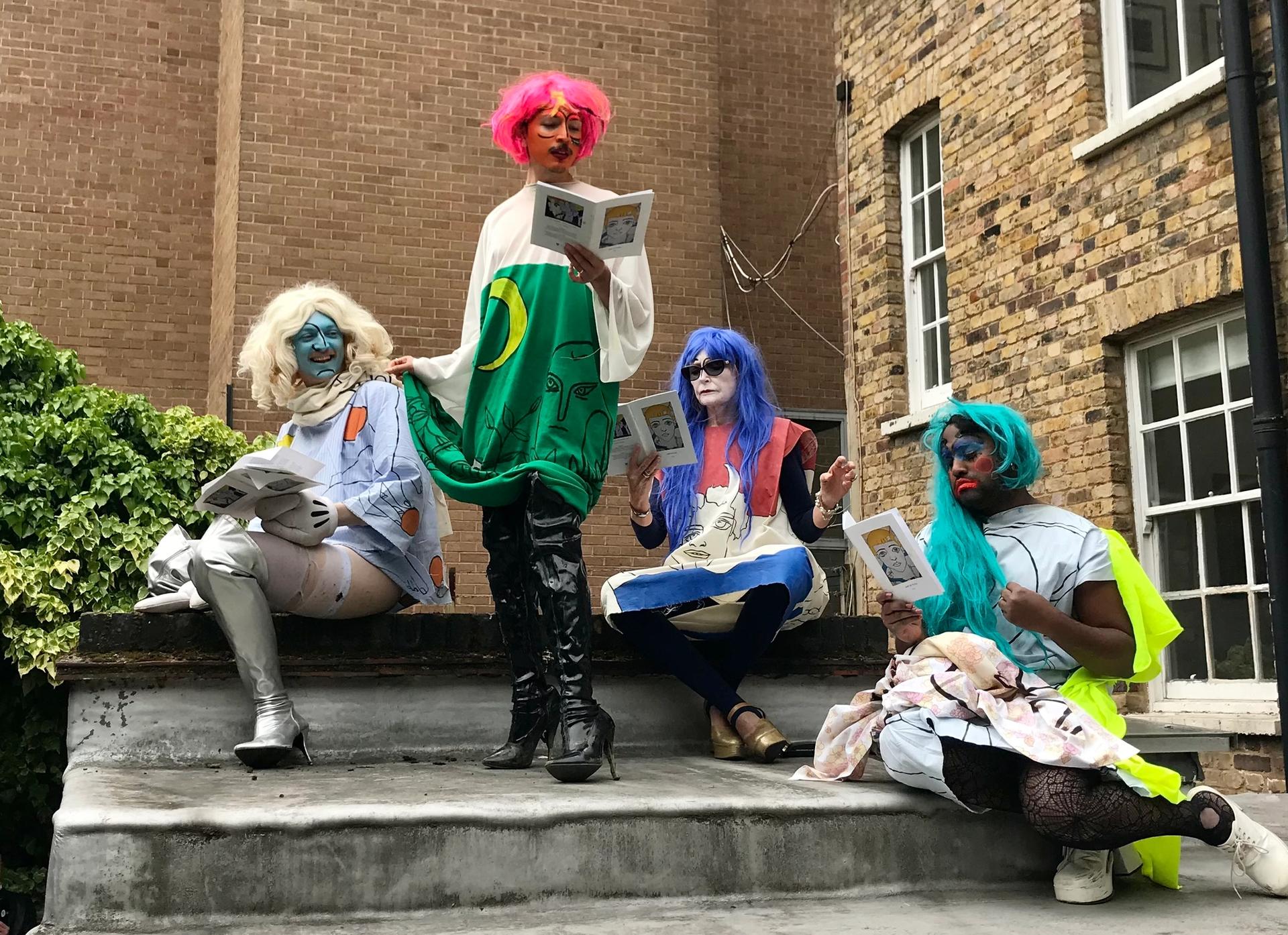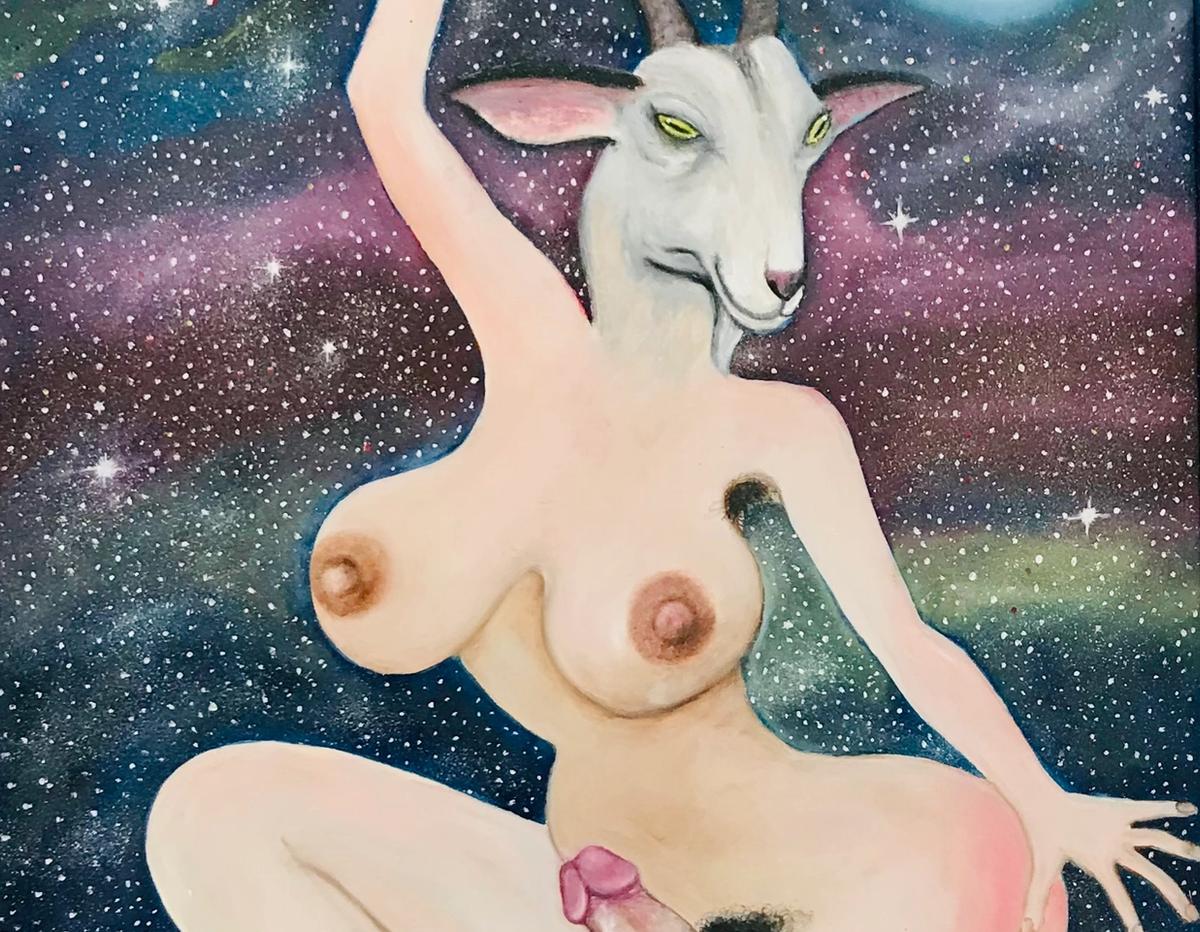1 May or Mayday is a big event in the pagan calendar. For the Celts it marked the major festival of Beltranem, when spring turns into summer, sap starts to rise and thoughts turn to fecundity. Hence the erection of maypoles and all other manner of ribald ritualistic shenanigans.
So strongly ingrained is this ancient pre-Christian festival across the western world that Mayday, with all its radical and nonconformist connotations, was adopted by the early socialist movement, with the first international Mayday proclaimed by the second Socialist International in 1889. Miraculously, given our evermore right-wing government, Mayday continues to be a national holiday in the UK and this year the May Bank holiday weekend had an especially liberated feel as it coincided with a loosening up of England's lockdown.
It was therefore the perfect moment to open Queer as Folklore, a wonderfully named exhibition at Gallery 46 in Whitechapel which gathers an eclectic range of work by LGBTQIA artists that explores and celebrates the subversive highways and byways of British pagan history. After months of being incarcerated behind closed doors and bombarded by a tide of mixed government messages and reports of establishment corruption, this unleashing of the myths, rituals, fantasies and legends that have evaded millennia of repressive rulers and established religions was especially welcome. Especially as it was for many present their first real-life experience of art this year.
Queer as Folklore channels our pagan past in myriad ways, from the painted sprites, shapeshifters and satyrs of David Harrison, which cavort against starry skies and magical moons, to the leafy paintings and green man sculptures of Ben Edge and the vividly painted puppet-like sculptures of Jim Pilston. Legendary feminist trailblazer Caroline Coon, presents a striking reinterpretation of the pièta—a biblical scene which depicts Mary holding a dead Jesus—in which a prone female lies spreadeagled across the thighs of a seated priapic patriarch. And all manner of sexual congress and bodily emissions erupt across the surfaces of Paul Kindersley’s large draped fabric works.

Paul Kindersley and his troupe performing Ship of Fools Courtesy of Louisa Buck
Kindersley also offered some suitably rumbustious live frolics on Bank Holiday Monday with a socially distanced restaging of Ship of Fools, his camp extravaganza based loosely on Hieronymous Bosch’s eponymous painting and inspired by medieval travelling mummers plays. Perched somewhat precariously on a rooftop jutting into the gallery’s back courtyard, the artist their faces painted and rigged out in multicoloured wigs, were dressed in flamboyant Kindersley-designed costumes and exotic footwear, they strutted, posed and declaimed from on high while the audience below re-accustomed themselves to being surrounded by fellow humans and being able to indulge in mass daytime drinking. Kindersley describes the themes of his gesamtkunswerk as “personal autonomy, group dynamics, ecology and responsibility” while at the same time being “silly, exuberant and confusing”, all of which provided the ideal framing for this most merry and meaningful of Mayfests.
• Queer as Folklore, Gallery 46, until 30 May



